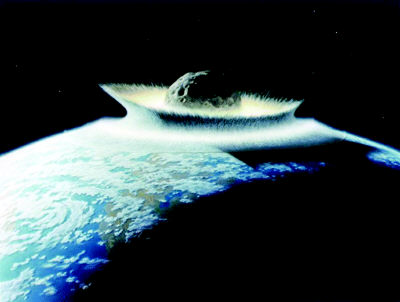TopDig.net - Blog Post - Six Natural Disasters from the Beginning of 2008 to Present
Is the Earth really going to be destroyed? Look at the frequent unprecedented natural disasters happening globally recently.
1. Myanmar's cyclone disaster worse than the South Asian tsunami
On May 7, the death toll from Myanmar's tropical storm had risen to over 22,000 people, with more than 41,000 others missing and as many as one million homeless. The United Nations stated that nearly half of Myanmar's population was affected. Some relief organizations pointed out that the aftermath of this disaster might be even more severe than the 2004 South Asian tsunami, which caused 220,000 deaths.
"Save the Children" expressed that as more bodies are found in the coming days, the estimated number of deaths from the cyclone could rise sharply to as high as 50,000 in the next few days. Currently, 500 staff members of the organization are assisting with rescue efforts inside Myanmar. Now, Tropical Storm Nargis has moved towards Thailand, where a warning has been issued and preparations have been made.
According to Myanmar's national radio station yesterday, the death toll from the tropical storm that struck Myanmar last weekend has risen to 22,464. The province with the highest death toll is Ayeyarwady Division, with a total of 21,793 deaths; Yangon Province recorded 671 deaths. Additionally, 41,054 people are still missing, and 670 injured.
2. An 8-magnitude earthquake in Wenchuan County, Sichuan
At 14:28 Beijing time on May 12, an earthquake occurred in Wenchuan County, Sichuan (latitude 31 degrees, longitude 103.4 degrees), registering a magnitude of 8.
Zhang Hongwei, spokesperson for China's Earthquake Administration, said that this earthquake was strong, affecting a wide area, with a magnitude of 8. Regions such as Ningxia, Qinghai, Gansu, Henan, Shanxi, Shaanxi, Shandong, Yunnan, Hunan, Hubei, Shanghai, and Chongqing all experienced tremors. As of now, the death toll has exceeded 80,000. The whole nation mourns! According to reports from the Ministry of Health, as of 12:00 PM on June 14, a total of 95,654 people were hospitalized due to earthquake-related injuries, with 78,433 having been discharged, while 14,617 remain hospitalized. A total of 1,538,555 people have received treatment.
3. Heavy rains in the U.S. Midwest cause "once-in-500-years flood", 20 dead
June 15 — Heavy rains have caused catastrophic flooding in the U.S. Midwest, resulting in twenty deaths so far, with Iowa being hit hardest.
According to Hong Kong's Ta Kung Pao, fifteen deaths have been confirmed in Iowa, leaving thousands homeless. Four of the deceased were Boy Scouts who perished in a tornado that struck western Iowa on the eleventh. Evacuation orders have been issued in ten of Iowa's ninety-nine counties, and eighty-three counties have been declared disaster areas. Five additional deaths were reported in Indiana and Kansas. The Iowa Department of Homeland Security and Emergency Management stated that this severe flood has lasted about ten days, with water levels in nine major rivers either reaching or surpassing historical records. This event will be classified as a once-in-500-years flood. Cedar Rapids has become a flooded city, with mandatory evacuations enforced, forcing even officials in city hall to leave. The Des Moines River in Des Moines, the state capital with a population of 200,000, is expected to reach near levee height, prompting local authorities to urge residents to evacuate beyond the "500-year flood zone."
A tornado hit the Midwest on May 25, followed by heavy rains causing severe flooding in South Dakota, Minnesota, Wisconsin, Nebraska, Illinois, Indiana, Kansas, Oklahoma, and Arkansas. Forecasts indicate that storms and heavy rains may continue for another week starting from the fourteenth and fifteenth. On the thirteenth, meteorologists predicted that at least fifty-three locations across these states would experience major flooding over the next two days.
Additionally, various other natural disasters have occurred frequently since the beginning of this year.
For example:
4. Snowstorms in Southern China at the start of the year: From January 10 to February 2, four large-scale cold waves with freezing rain and ice occurred nationwide, lasting more than 20 days. This was the largest occurrence in nearly 50 years.
5. Kaihua in Zhejiang experiences a once-in-50-year great flood affecting over 300,000 people
May 29 — According to Zhejiang Today, starting at 8 p.m. the previous evening, most areas of Quzhou saw continuous heavy to torrential rains, triggering flash floods in some regions. Kaihua County was hit by a once-in-50-year great flood, affecting all 18 townships and 449 administrative villages, with over 300,000 people impacted. There have been no reports of casualties so far.
6. Strong earthquake in Japan leads to nuclear power plant leakage
After a 7.2-magnitude earthquake occurred in Iwate Prefecture and Miyagi Prefecture in northeastern Japan on June 14, the casualty figures are currently being verified. In Oshu City, Iwate Prefecture, a worker at a reservoir construction site was struck by falling rocks and is in cardiac arrest. A bus in the city was buried under sand and soil, with 17 people still trapped inside.
And so on. What is happening to the Earth? Is it really going to be destroyed?
